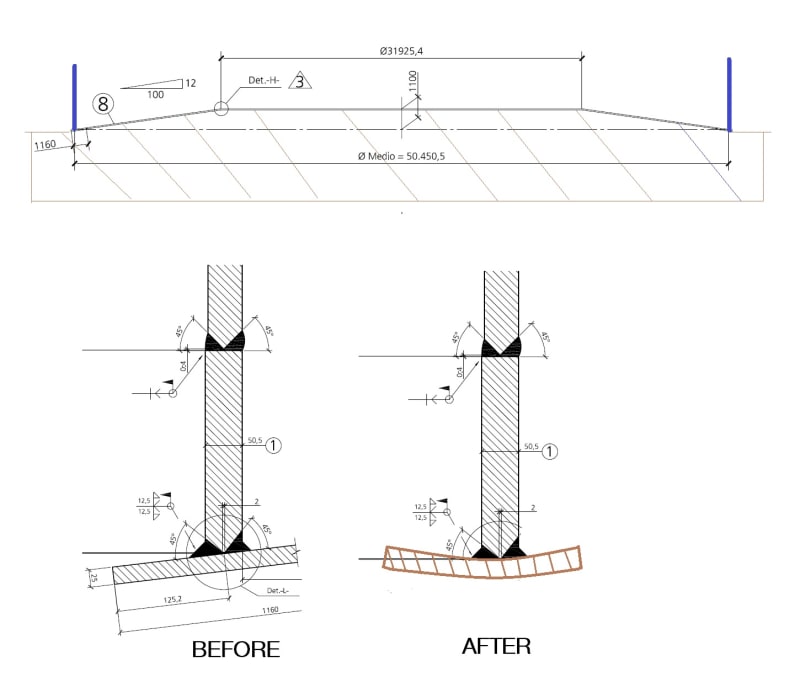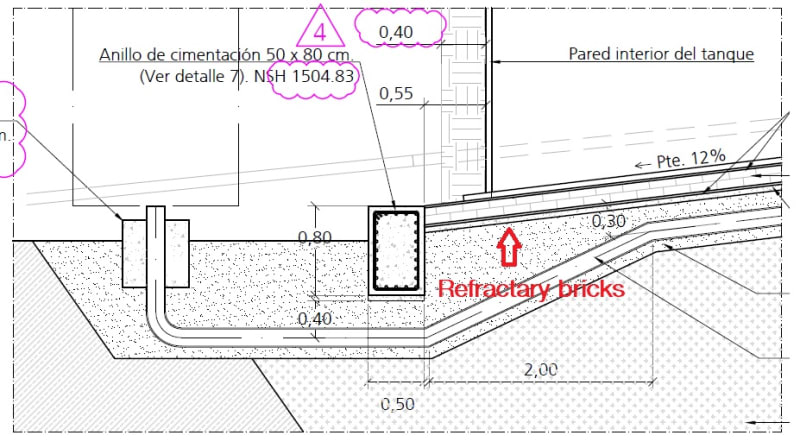Eduardo1982
Mechanical
- Oct 31, 2014
- 65
Hey guys.
In my workplace we have a storage tank that works around 350 °C. During an outage we drainaged the liquid and started to perform a inspecion (internal and external too removing the insulation). We have noted that the bottom plate (edge side) has been deformed as shows in pictures attached (brown lines)

The bottom tank shape is flat (center) and conic (in edges).The theory of edge settlement indicates that the settlement could be occured in the opposite side of the current status of my tank.
We dont´know so much why the bottom edge could have changed on this way. Do you guys have ever faced a similar situation before?
Any idea or info I will higly appreciate.
Best regards.
In my workplace we have a storage tank that works around 350 °C. During an outage we drainaged the liquid and started to perform a inspecion (internal and external too removing the insulation). We have noted that the bottom plate (edge side) has been deformed as shows in pictures attached (brown lines)

The bottom tank shape is flat (center) and conic (in edges).The theory of edge settlement indicates that the settlement could be occured in the opposite side of the current status of my tank.
We dont´know so much why the bottom edge could have changed on this way. Do you guys have ever faced a similar situation before?
Any idea or info I will higly appreciate.
Best regards.

